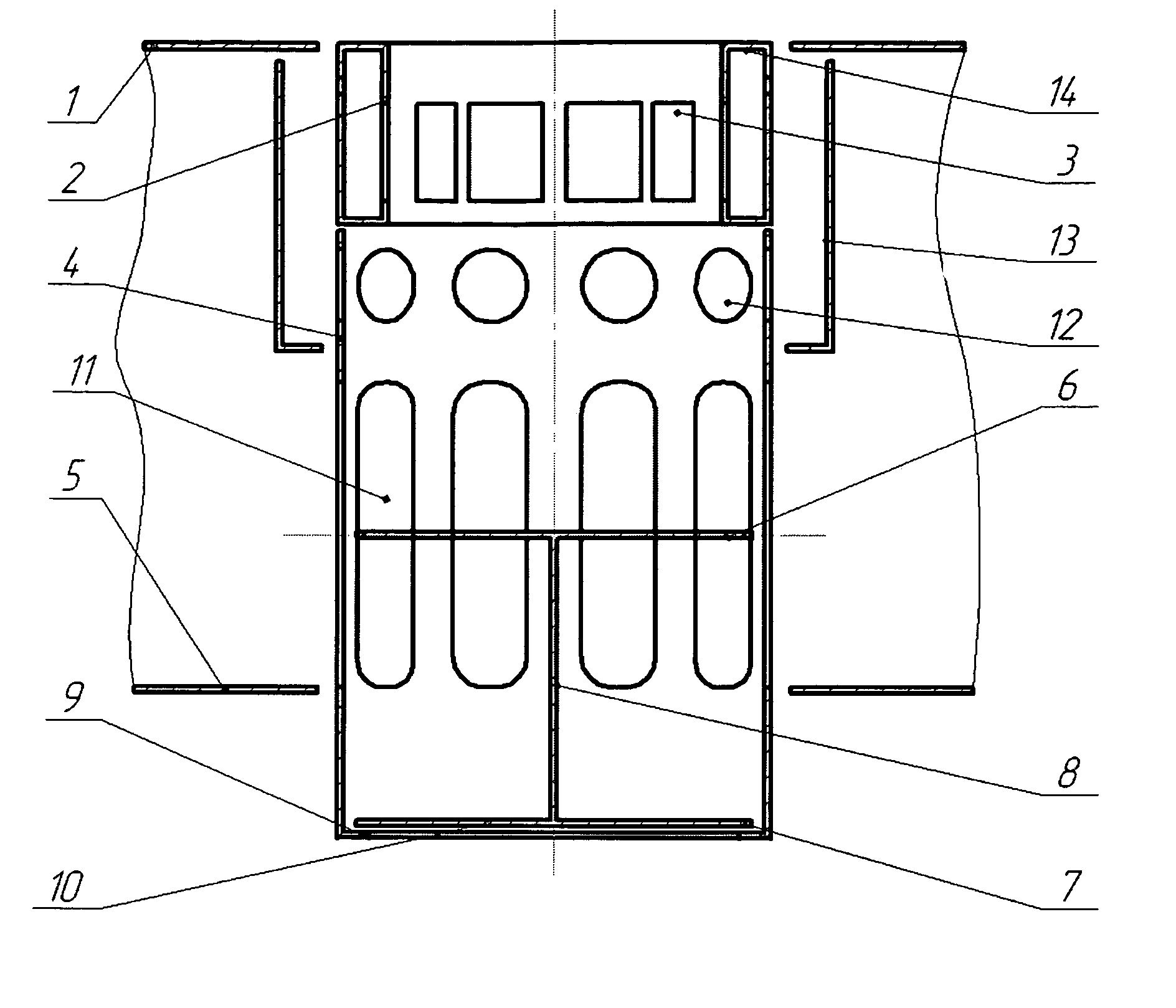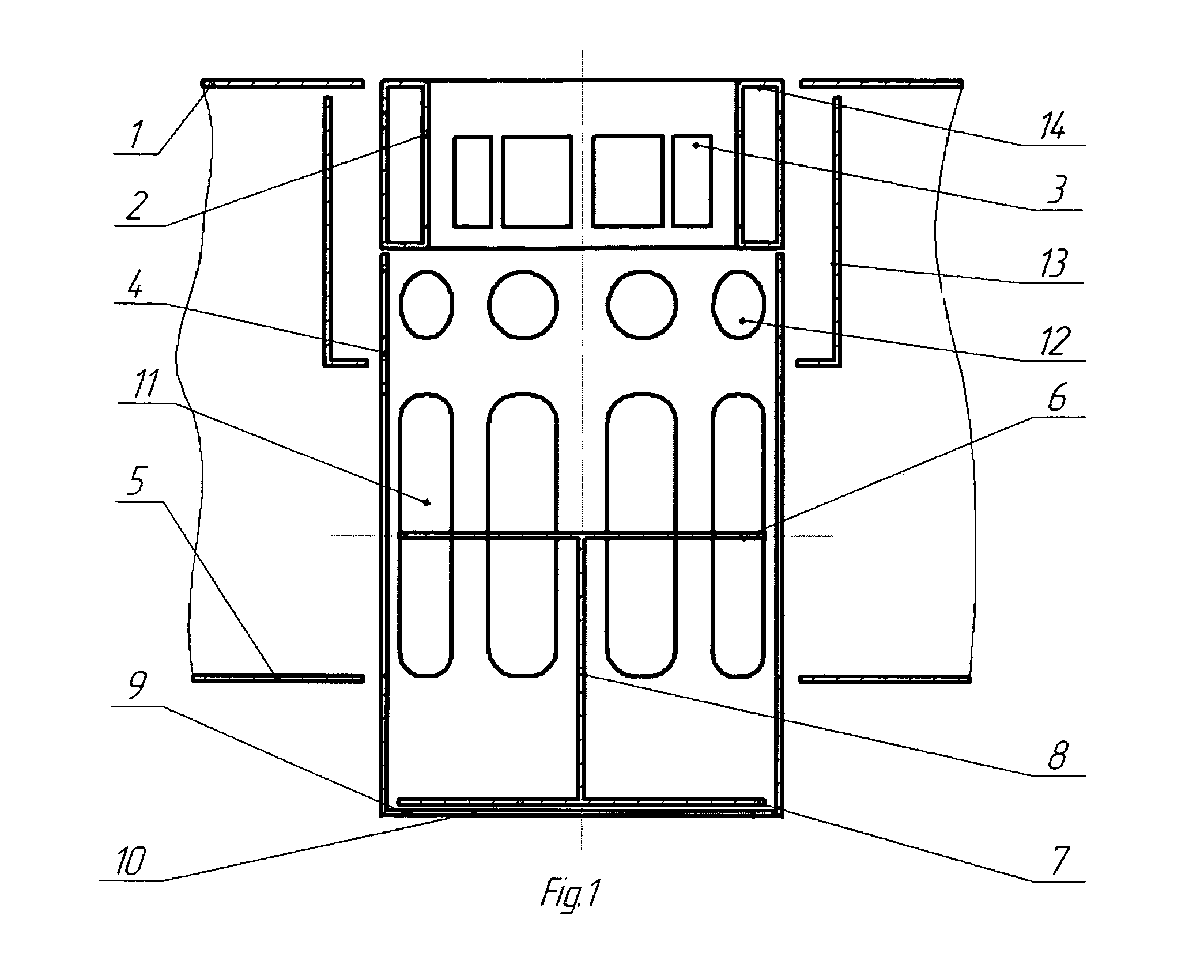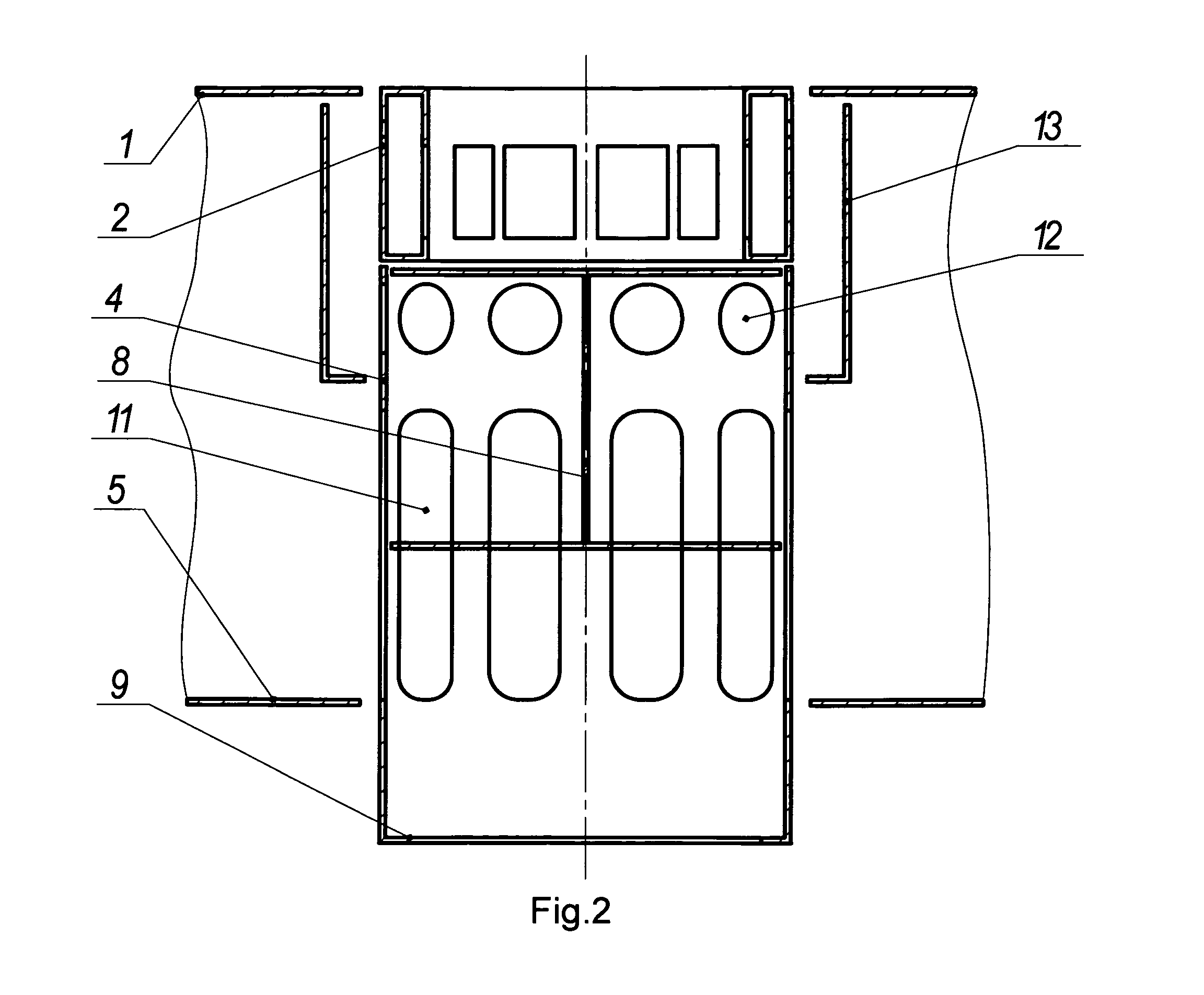Mass exchange contact device
a contact device and mass exchange technology, applied in the direction of liquid-gas reaction of thin-film type, separation process, fuel gas production, etc., can solve the problem that the ascending volatile phase flow cannot stably support the liquid phase in cyclic mode, the hydraulic resistance of the plate increases, and the speed of the volatile phase changes along the height of the column
- Summary
- Abstract
- Description
- Claims
- Application Information
AI Technical Summary
Benefits of technology
Problems solved by technology
Method used
Image
Examples
first embodiment (
‘Parent’)
[0038]As illustrated on FIGS. 1, 2, 3, and 4, the contact device comprises an upper tray (1), a contact element (2) fixed to the upper tray 1, which contact element 2 includes a bottom opening and a barbotage unit (14) configured as an inner cap with strips (3) tangently bent out; an additional lower tray (5) disposed substantially in a parallel plane below the upper tray 1; a cylindrical casing (4) including a bottom opening (10), a ring-shaped descending limiter (9) formed inside the opening 10, a plurality of vertically extended windows (11) circumferentially disposed on the substantially vertical walls of the casing 4 (lower row) and a plurality of circular orifices (12) circumferentially disposed on the walls of the casing 4 (upper row) above the windows 11; a movable double-acting valve composed of an upper solid plate (6) and a lower solid plate (7) disposed above the plate 6, both the plates are fixedly attached to a distance rod (8) substantially vertically situate...
second embodiment (
‘Continuation’)
[0050]A common problem of the related art devices can be described as follows: an ideal mass-exchange process for separate movements of the liquid and volatile phases envisages a 100% intermingling of the phases during the introduction of the volatile phase, whose concentration changes during the mass-exchange process. In case of the 100% intermingling, the change of concentration xn of the volatile phase occurs during a time t of passage of the volatile phase throughout an entire volume of the liquid phase according to a dependence of dxn / dt. However, if one could orderly alter the concentration of the volatile phase along a height (z) of the liquid phase component, it would lead to an increase of the efficiency of separation of the liquid and volatile components on the mass-exchange tray according to a dependency of d2xn / dtdz.
[0051]This problem is herein solved in the second embodiment of inventive device / method for improvement of mass-exchange between a volatile ph...
third embodiment (
‘Continuation’)
[0062]The third embodiment of inventive device for improvement of mass-exchange between a volatile phase and a liquid phase is illustrated on FIGS. 8 and 9. The third embodiment basically includes elements identical to the elements of the second embodiment. However, according to the third embodiment, the space between the layers of package fittings 15 is filled out with a suitable conventional catalytic material (16), which increases the efficiency of the mass-exchange process in a column.
[0063]A column 20 (FIGS. 8 and 9), wherein catalytic distillation takes place, contains an upper row and a lower row of mass exchange contact devices, designed according to the first embodiment, wherein each of the rows is combined with a packing fitting 15 placed above thereof, and containing the catalytic material 16. FIG. 8 shows the state wherein the volatile phase is not introduced, whereas FIG. 9 shows the state wherein the volatile phase is introduced.
PUM
| Property | Measurement | Unit |
|---|---|---|
| distance | aaaaa | aaaaa |
| size | aaaaa | aaaaa |
| hydraulic resistance | aaaaa | aaaaa |
Abstract
Description
Claims
Application Information
 Login to View More
Login to View More - R&D
- Intellectual Property
- Life Sciences
- Materials
- Tech Scout
- Unparalleled Data Quality
- Higher Quality Content
- 60% Fewer Hallucinations
Browse by: Latest US Patents, China's latest patents, Technical Efficacy Thesaurus, Application Domain, Technology Topic, Popular Technical Reports.
© 2025 PatSnap. All rights reserved.Legal|Privacy policy|Modern Slavery Act Transparency Statement|Sitemap|About US| Contact US: help@patsnap.com



